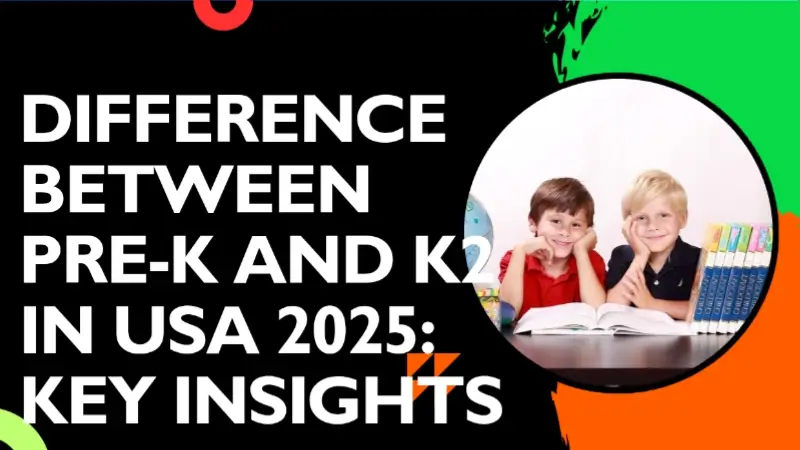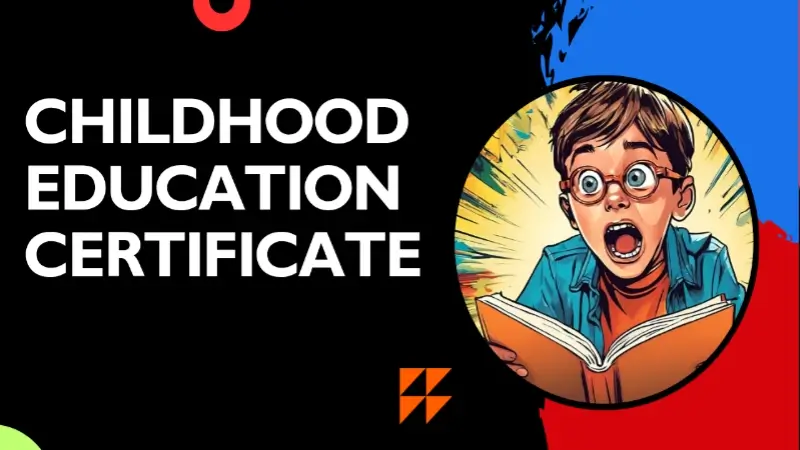Difference Between Pre-K and K2 in USA 2025: Key Insights
“Discover the difference between pre-k and K2 in USA 2025. Learn age ranges, curriculum, benefits, and expert tips to choose the best early learning path for your child.”
Difference Between Pre-K and K2 in USA

Introduction
Choosing the right early education program can feel overwhelming for many parents and guardians. Difference between pre-k and K2 in USA programs often raises questions: What age groups do they serve? How do curricula differ? Which environment best supports my child’s growth? In this article, we’ll clarify these issues by exploring definitions, curriculum focus, and learning outcomes. Whether you’re a first-time parent or an educator, you’ll find clear, actionable guidance to solve your concerns.
“The foundation of learning starts long before first grade.” – Early Education Expert
What Is Pre-K?
Overview of Pre-K Education
Pre-K, or pre-kindergarten, typically serves children ages 3–4. It emphasizes social skills, basic literacy, and introductory math concepts. Most pre-k programs are voluntary and can be found in public schools, private preschools, and community centers.
Age and Eligibility
- Age Range: 3 to 4 years old.
- Enrollment: Often based on birthdate cutoffs set by state or local districts.
Curriculum Focus
- Emergent literacy: Letter recognition, vocabulary building.
- Numeracy basics: Counting, shapes, simple patterns.
- Social development: Sharing, turn-taking, and following classroom routines.
Benefits of Pre-K
- School readiness: Eases transition to kindergarten.
- Social growth: Builds communication and cooperation skills.
- Early support: Identifies developmental needs early.
What Is K2?
Understanding the K2 Stage
K2, often called Kindergarten 2 or transitional kindergarten, serves children around ages 5–6. It bridges the gap between kindergarten and first grade by reinforcing foundational skills.
Key Components of K2
- Age Range: 5 to 6 years old.
- Structure: More structured than pre-k, with a balance of play-based and academic activities.
Curriculum Highlights
- Advanced literacy: Reading readiness, writing simple sentences.
- Mathematics: Addition/subtraction basics, measurement.
- Science & Exploration: Hands-on experiments, nature studies.
- Fine motor skills: Cutting, writing, and art projects.
Skills Developed in K2
- Critical thinking through problem-solving tasks.
- Independence with routines and tasks.
- Collaboration in group projects.
Comparing Pre-K and K2
Side-by-Side Comparison Table
Source: U.S. Department of Education (https://www.ed.gov){:target=”_blank”}
Tips for Parents Choosing Between Pre-K and K2
- Visit Classrooms: Observe teaching style and environment.
- Assess Readiness: Consider your child’s social and academic cues.
- Ask Questions: Inquire about teacher qualifications and class size.
- Review Schedules: Ensure program hours match family needs.
How to Prepare Your Child
Morning Routine
- Consistent sleep schedule.
- Healthy breakfast and hydration.
Emotional Support
- Talk about school positively.
- Read books about starting school.
Basic Skill Practice
- Play letter and number games.
- Encourage independent dressing and eating.
Internal Resources
Learn more tips at AIXploreTech’s Parenting Hub for expert advice on early education.
FAQs
What if my child turns 5 after the kindergarten cutoff?
Most districts offer transitional programs like K2 to accommodate age exceptions.
Is K2 mandatory before first grade?
No. K2 is optional in many areas but strongly recommended for social and academic readiness.
How much does Pre-K/K2 cost?
Costs vary by state, program type, and whether it is publicly funded or private.
Can children repeat K2?
Yes, if additional development time is needed before entering grade 1.
Conclusion
Choosing between pre-k and K2 in USA comes down to understanding your child’s age, readiness, and learning needs. Pre-K establishes the foundational skills, and K2 builds upon and sharpens them to guarantee a smooth move into elementary school. Use visits, assessments, and expert resources to make an informed decision that sets your child up for a bright academic journey.
Educational success starts with the right first step.
What age is preschool and kindergarten in the USA?
In the United States, the typical age ranges for early childhood programs are:
Preschool (Ages 3–5)
- Start age: Most children enter preschool at 3 years old, though some “toddler” or 2‑year‑old classes exist.
- End age: By age 5, many children move on to kindergarten.
- Focus: Social skills, basic literacy (letters, pre‑reading), early math concepts, and play‑based learning.
- Variations: “Pre‑K” often refers specifically to the year before kindergarten (around age 4).
Kindergarten (Ages 5–6)
- Start age: Children must be 5 by a state‑set cutoff date (commonly September 1) to enroll in kindergarten.
- End age: They turn 6 during the kindergarten year and then advance to first grade.
- Structure: A mix of play‑based and structured academic activities—reading readiness, writing simple sentences, basic addition/subtraction.
Note on Cutoff Dates: Each state (and even individual districts) sets its own birthday cutoff for kindergarten eligibility—double‑check your local district’s policy if your child’s birthday is near the cutoff.
Quick Tip: If your child turns 5 just after the cutoff, many districts offer Transitional Kindergarten (TK) to give them an extra year of readiness before Grade 1.
What is the difference between pre kg and nursery school?
Though the exact terms vary by country and even by school, “nursery school” and “Pre‑KG” usually refer to two successive steps in early childhood education. Here’s how they typically differ:
Key Differences
- Age & Maturity
Nursery classes welcome very young toddlers who are just getting used to being away from home. In Pre‑KG, children are a bit older and more emotionally ready for a mix of play and simple lessons. - Structure vs. Play
- Nursery: Learning thrives through open‑ended, child‑directed play.
- Pre‑KG: Introduces a predictable schedule—circle time, snack, story, and a few short “teacher‑led” activities.
- Learning Goals
- Nursery: Build basic social and motor skills.
- Pre‑KG: Begin developing early literacy and numeracy to ease the transition into Kindergarten.
- Preparing for the Next Step
Pre‑KG often functions as a “bridge” year—helping children master simple routines (lining up, listening for instructions) and basic concepts so they’re ready for full‑day, more academic Kindergarten.
Tip for Parents: Always check with your local schools: labels can differ. Ask to see sample schedules or visit a class to see whether they call it “nursery,” “Pre‑KG,” or even “Toddler Preschool,” and what activities they offer at each level.
Bottom line:
- Nursery School = first exposure to group learning, focused on play and social skills.
- Pre‑KG = next level, blending play with short, structured lessons in letters, numbers, and routines—getting little ones ready for Kindergarten.



